The school is an important institution of socialisation and plays a vital role in developing and influencing the child’s perspectives apart from the family. The curriculum used in the school plays an integral part in the teacher’s pedagogy and the textbooks particularly are what students interact with closely and acquire concepts from. However, recently it has been a common pattern spotted in textbooks in both India and Pakistan that belittles housewives, scapegoats women for dowry, and disseminates sexism and regressive gender stereotypes.
Here are few examples from practices in Indian & Pakistani schools that reinforce harmful gender stereotypes:
1. Poultry Farming For Girls To Learn ‘Kitchen Skills’

Image Credit: Dawn – A Newspaper in Pakistan
The extent to which misogyny is internalised is portrayed when the news broke out that the Punjab Government in Pakistan wanted to provide girls in school with hens and a cage to teach them “kitchen skills”. This program restricts the kitchen and cooking to women. Why can’t they teach men kitchen skills too? It contributes to perpetuating gender roles that insist that the woman belongs in the private sphere of the home and the man is the breadwinner and goes out in the public sphere.
When the government and schools normalise such outrightly sexist ideas, one is compelled to think – what benefit does the government get from maintaining the status quo? In a capitalist society, women perform the unpaid labour that enables men to benefit from it and contribute to maintaining the social structure.
Also, how does taking care of chickens help in teaching people “kitchen skills”? It seems quite illogical to equate caring for an animal with making a meal, or washing the dishes. Is the government trying to perpetuate the idea that men are quite like chicken and women need to take care of them, similarly? Who knows?
2. A Daily Timetable For Women’s Chores
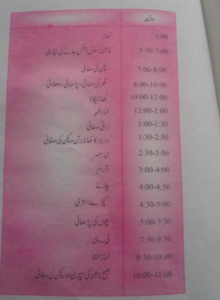
Image Credit: Umer Farooq
5:00 a.m. – Prayer
5:30-7:00 – Breakfast, Send kids to school, Husband to office
7:00-8:00 – Clean the kitchen
8:00 – 10:00 – Clean the house, wash up
10:00 -12:00 – Prepare the food
12:00 – 1:00 – Prayer
1:00 – 1:30 – Personal Cleanliness
1:30 – 2:30 – Lunch, Wash the utensils
2:30 – 3:00 – Prayer
3:00 – 4:00 – Relax
4:00 – 4:30 – Tea time
4:30 – 5:00 – Iron the clothes
5:00 – 7:30 – Kids studying time
7:30 – 9:30 – TV time
9:30 – 10:00 – Prayer
10:00 – 11:00 – Prepare for morning breakfast, clean the kitchen
This is an image from a home economics textbook used in schools in Pakistan in the Sindh Board for children of Class 8. It portrays a schedule for the ideal woman to follow (and of course, no such thing exists for men). The entire day is catered around housework, with most of the time devoted to the cleanliness of either the kitchen or the house and the five daily prayers. It is terrifying that there is no time allotted for any sort of personal fulfillments except for maybe, personal cleanliness. It dehumanizes the woman into a robot who is trained to be the perfect housewife because obviously that’s what all women intend to be. She is supposed to be up at 5 a.m. and work almost nonstop till 11 p.m. It sets unrealistic standards for young girls. It assumes that all girls intend on being housewives and even if they do, it makes them see their future lives revolving around only these menial tasks. The only idea of leisure is two hours of television, because of course, that is the only appropriate past-time for women! Oh, and there is an hour of relaxation – all these women must be so grateful at this magnanimous gesture.
3. “Ugliness” And Disability As Factors Towards Increased Dowry
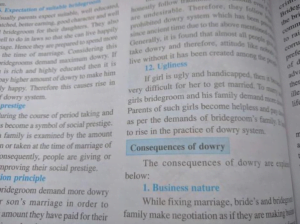
Image Credit: Hindustan Times
A Class 12 Sociology textbook in Maharashtra, India, justifies dowry on the basis of the ugliness of the girl. Who even defines what ugly is? Isn’t beauty a social construct? This textbook in Maharashtra tries to justify the horrendous custom of dowry by blaming brides who don’t meet the beauty standards of society and are differently abled. Rather than condemning the heinous act, it justifies that women who aren’t ‘good enough’ are the reason this practice exists. One ends up wondering how many children will be able to see through this nonsense in school, considering that schools mostly reward subservience rather than being critical at large.
4. Likening A Housewife To A Donkey

Image Credit: Times of India
An excerpt from a Class 9 Hindi textbook in Rajasthan, India, is not only demeaning and devaluing the unpaid labour that housewives perform, but also claims that women are worse than donkeys on the basis that they exercise their rights and leave possibly abusive relationships, which makes them disloyal because they disobey their “master” (read: husband). It sets a precedent that women are objects under the ownership of men. It contributes to students possibly internalising these misogynistic ideas and considering their female peers as inferior because the textbook propagates that very idea. It is ironic because a donkey in a society like ours actually performs far more work than any of his kind, It’s used as a means of transport by washermen, by those who carry construction materials which are quite heavy. It’s a far stronger animal than most others who are considered the more ‘masculine’ type. The worst part is it was shrugged off as humour by the education board as if that could be an excuse for the ridicule.
5. Working Women As The Cause Of Unemployment

Image Credit: Times of India
This Social Science textbook of Class X in Chhatisgarh, India, is rather hilarious because it reminds me of Donald Trump. He blames immigrants as one of the causes for unemployment for white people and scapegoating everyone who isn’t white, cis, and male is his forte. Of course it’s easier to scapegoat working women for everything that goes wrong in the nation. When referring to unemployment, it is automatically assumed that it is only men that are unemployed and not women as women’s unemployment isn’t seen as a threat to society. It also devalues the labour that working women perform. This also contributes to alienating all the potential working women when they are labeled as the cause for a menace to society.
6. Labelling Homosexuality As Perverse And Criminal

Image Credit: Homegrown
This Toxicology textbook presents homophobic claims. These textbooks deem heterosexuality as the norm and any deviation from it a problem. The “homosexuality is a disease” discourse can be delineated to history when labelling anyone who doesn’t conform to the norm as pathologically ill and thus can be cured.

Image Credit: Homegrown
Lesbianism is presented as a perverse act in a forensic studies textbook. Those who don’t conform are deviant and labeled as jealous and criminal, as if sexuality has a link to criminality or jealousy. The language is laced with misogyny in the use of words such as ‘perversion’ while describing homosexuality.
7. Women As Incapable To Manage Their Affairs
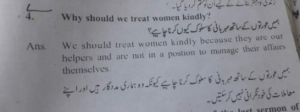
Image Credit: Twitter (@tazeen)
A textbook guide to Class 7 English from Punjab, Pakistan advises students to treat women kindly because they are not capable of handling things on their own, as they are “helpers”. Because of course, women are only worthy of respect if they are aiding the patriarchy!
In a nutshell, education systems are largely contributing to the dissemination of sexist ideas and are reinforcing gender stereotypes and perpetuating homophobia. It is highly irresponsible of schools to perpetuate such ideas, which are outright misogynist, as they are not even a part of the hidden curriculum but the official curriculum, which teachers sustain. It results in a generation of students growing up reading such textbooks and possibly internalising such problematic ideas and acting upon them.
Featured Image Credit: Christopher Dombres
About the author(s)
Maryam is an aspiring sociologist who is keen on working on of gender, advocates an intersectional feminism and is hopeful of smashing the patriarchy.
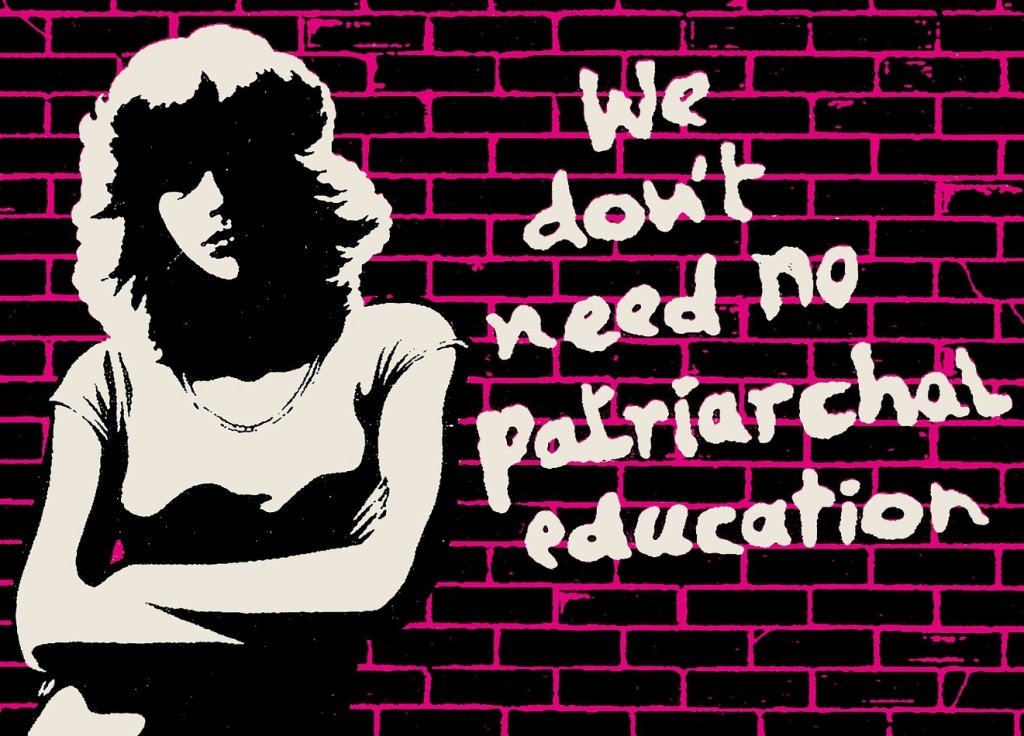


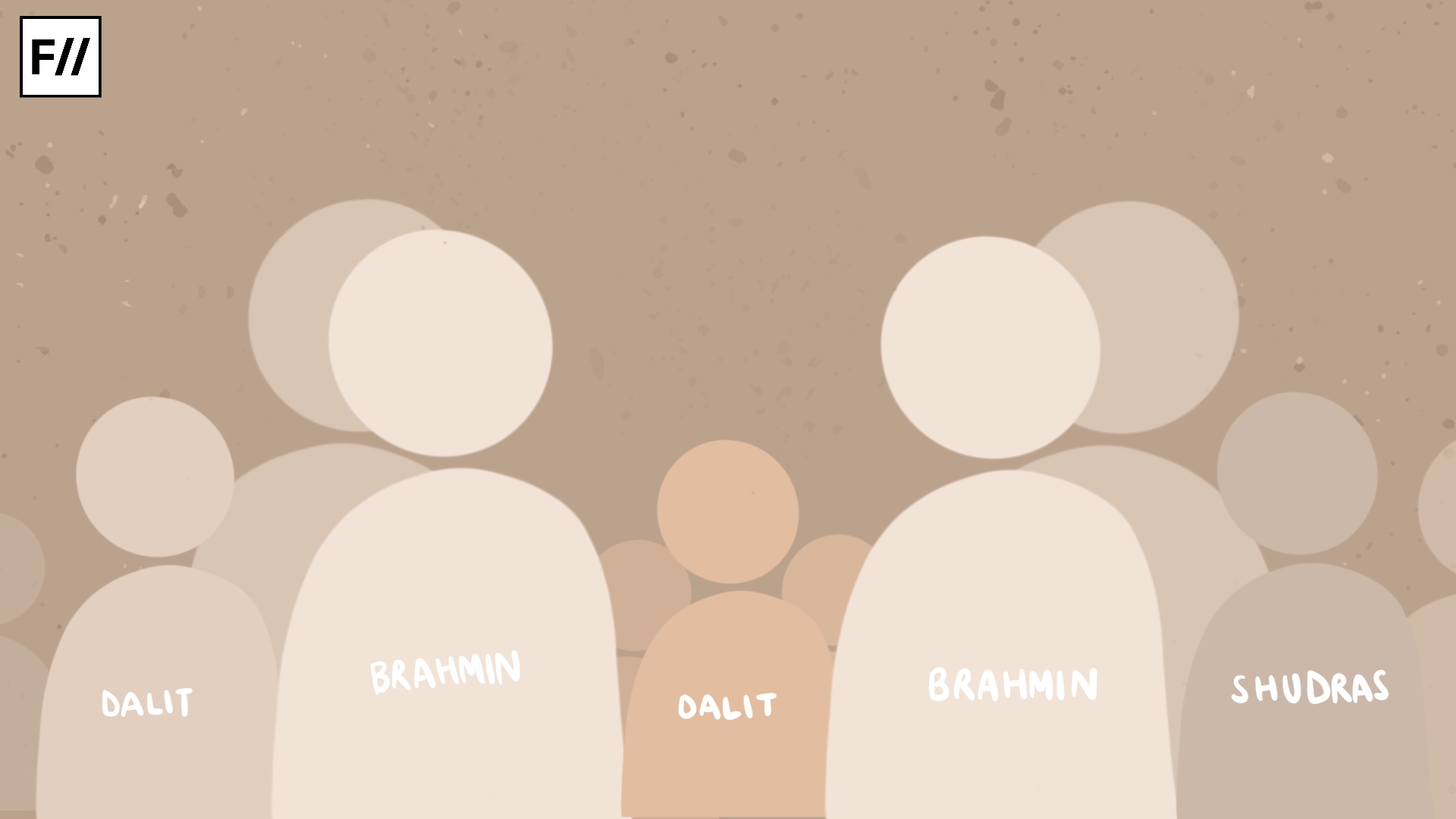

V well written
Hey amazing article dude! i hope these misleading statements are scrapped out.